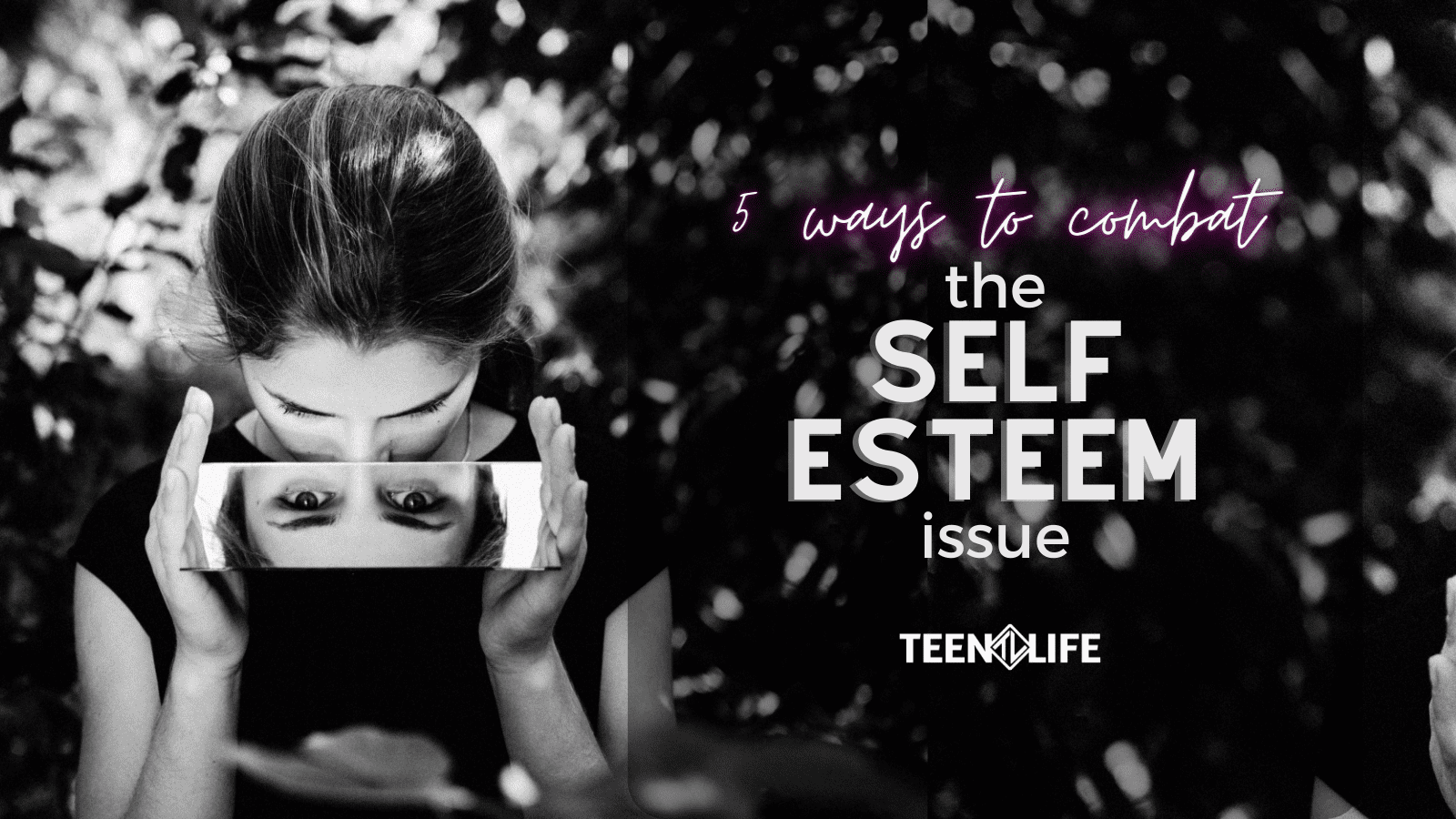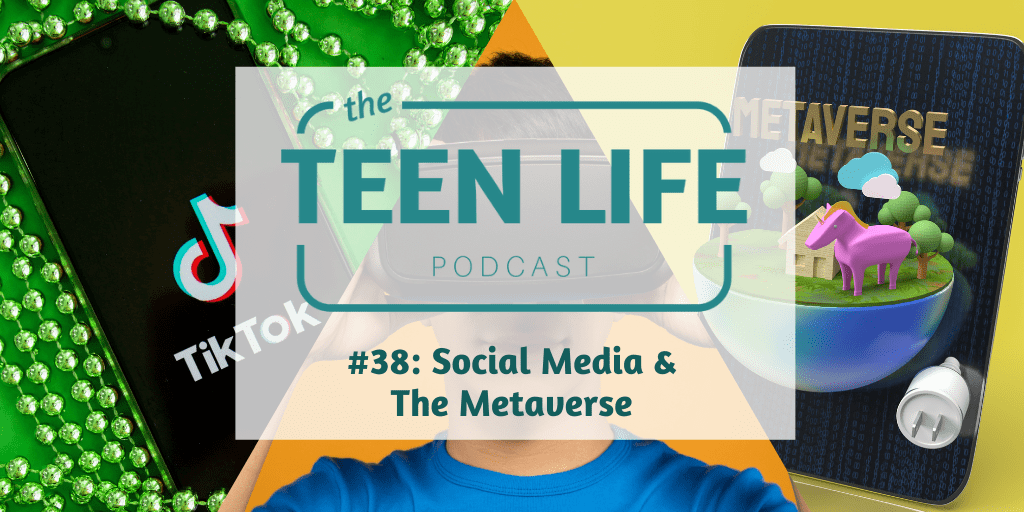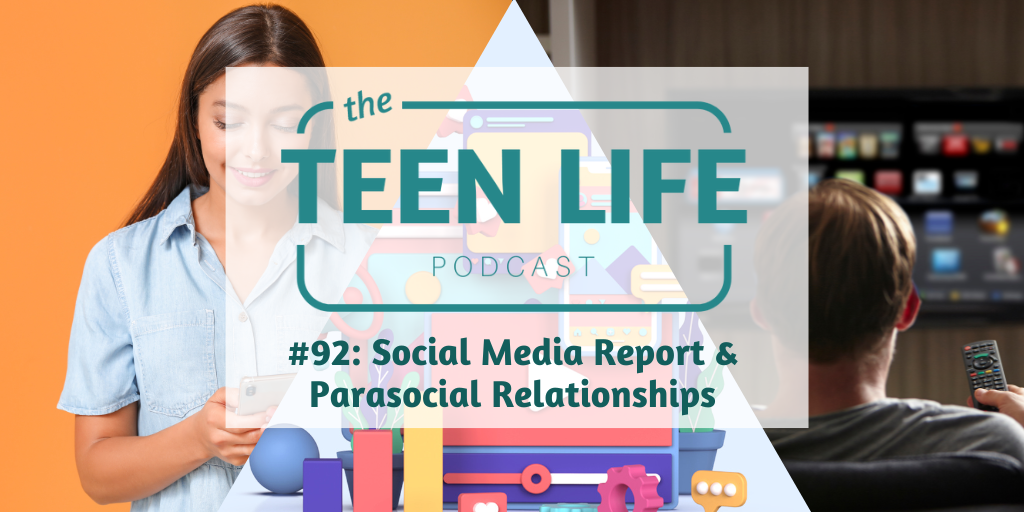Podcast: Play in new window | Download
Navigating Teen Trends and Promoting Positive Body Image
As parents, educators, and caregivers, it’s hard to keep up with the ever-changing trends and challenges that teenagers face. In episode 128, we explain some of the most prevalent teen trends, from “Girl Math” to the “Spicy Chip Challenge” to “RushTok”. We’ll also discuss the critical issue of teenagers’ body image and offer actionable advice on how to promote healthy self-esteem in teens.
Unpacking Girl Math and Girl Dinner
If you’re on social media, you’ve probably seen at least one influencer post talking about “Girl Math” or “Girl Dinner.” Both have garnered attention for their quirky and sometimes unsettling nature.
Especially on TikTok, teenagers enthusiastically share videos of their unique culinary concoctions and eating habits.
While on the surface, these trends may seem innocuous or even humorous, it’s worth delving deeper into their implications for teenagers’ relationships with food and body image.
“Girl Dinner” – The Extraordinary in the Ordinary
Imagine a dinner that consists of nothing more than a solitary cube of cheese or a handful of popcorn. Welcome to the world of “Girl Dinner.”
This trend showcases teenagers (and women) preparing and consuming meals that defy conventional expectations of what a meal should be. For some, it’s about embracing minimalism, while for others, it may be an attempt at humor or even a cry for attention.
At first glance, these seemingly bizarre meal choices might appear to be harmless. However, they provide a unique lens for examining the complex intersection of youth culture, social media, and body image.
The Impact on Teenagers
The impact of trends like “Girl Dinner” goes beyond just sharing quirky meals on social media. It delves into the intricate relationship that adolescents have with food and their bodies.
Here’s how these trends can influence teenagers:
- Normalizing Extreme Behavior
By celebrating and sharing outlandish meals, teenagers may inadvertently normalize extreme eating habits or dietary restrictions. While it’s crucial to respect individuals’ dietary choices, these trends sometimes glorify unhealthy or unsustainable eating patterns.
– - Body Image and Comparison
Social media often fosters an environment where teenagers compare themselves to others. When they see peers engaging in “Girl Dinner” trends, they might feel pressured to conform or question their own eating habits. This can exacerbate existing body image issues or lead to the development of new ones.
– - Seeking Validation
Posting unconventional meals can also be a way for teenagers to seek validation and attention online. The number of likes, comments, or shares on these posts can become a metric for self-worth, reinforcing the idea that appearances and eating habits are closely tied to validation.
– - Distorted Perceptions
These trends can contribute to a distorted perception of what constitutes a “normal” meal, further complicating teenagers’ understanding of nutrition and healthy eating.
–
In the grand scheme of internet trends, “Girl Dinner” and its counterparts are fun when taken as originally intended, but the quantity of concerning posts that have come in their wake and their potential to impact teenagers’ physical and mental well-being should not be underestimated.
As responsible adults and guardians, it’s essential to engage in open conversations with teenagers about these trends. Encouraging them to think critically about what they see and share on social media can help them develop a healthier relationship with food and their bodies.
By fostering a supportive and understanding environment, we can empower teenagers to navigate these trends with confidence, prioritize their well-being, and ultimately make informed choices about what they choose to consume, both online and at the dinner table.
The Spicy Chip Challenge: More Than Just a Dare
The Spicy Chip Challenge, featuring the infamous Paqui One Chip, is a phenomenon that has left both teenagers and adults bewildered- and sometimes seriously affected. Packaged in a striking coffin-shaped box, the Paqui One Chip boldly boasts of being made for the “vengeful pleasure of intense heat and pain.” While the packaging itself sets the stage for an unusual experience, the challenge takes it to a whole new level.
The rules of the challenge are simple: participants must consume the Paqui chip and then endure the scorching heat it brings for as long as possible without consuming any other food or water. On the surface, it may seem like a silly stunt, but the consequences have been anything but light-hearted.
In fact, in August, a chilling incident unfolded in Massachusetts, where one teenager tragically lost their life due to complications arising from the Spicy Chip Challenge. Beyond this tragedy, numerous other young individuals have had to seek medical attention after attempting the challenge. From severe stomachaches to breathing difficulties, the injuries sustained are a testament to the potential dangers lurking behind seemingly harmless internet challenges.
What makes the Spicy Chip Challenge all the more concerning is the fact that, although the packaging claims it’s “for adults only,” it remains readily available for purchase by teenagers. The allure of viral fame and internet stardom has led many young content creators to embrace the challenge. YouTubers, streamers, and TikTokers have taken it up, often using it as a form of punishment or a way to attract views and likes.
We really can’t help but wonder if the company behind the Paqui chip genuinely expected teenagers to steer clear of this popular trend merely because of a warning label. The intoxicating allure of social media fame can easily override common sense, especially when told not to.
Not the First
The Spicy Chip Challenge and its associated risks bear an uncanny resemblance to past trends like the “pass out” or “blackout” challenge that have periodically swept through teen culture. These challenges involve intentionally causing oneself to faint, often resulting in severe injuries and, in some cases, fatalities.
It is a troubling pattern that underscores the need for greater vigilance and awareness regarding the content and challenges that captivate young audiences.
Taking Action
Fortunately, in response to the growing concerns and incidents associated with the Spicy Chip Challenge, the chip has been pulled from the shelves in most retailers. Additionally, the company has taken steps to offer reimbursement for those who still possess the chip, acknowledging the gravity of the situation.
But as caring adults, this challenge, like most, is just another example of the importance of keeping an on-going conversation with teenagers about critical thinking and how to discern between harmless fun and unnecessary risk.
RushTok: Inside the World of Sorority Rush and Its Impact on Teens
Centered around sorority rush events, “RushTok” has gained significant traction.
RushTok revolves around the entire sorority rush experience, from the preparation and outfit selections to the exhilarating anticipation of bid day.
Here’s a closer look at the various facets of this very popular trend:
OOTD Videos and the Golden Goose Obsession
Outfit of the Day (OOTD) videos have become a hallmark of RushTok. Teenagers eagerly share their daily attire choices as they navigate the intricate process of sorority rush, with some of the “fits” weighing in at tens of thousands of dollars. The fashion element of these videos is accentuated by the notable popularity of Golden Goose shoes. These trendy, high-end sneakers have become coveted staples in many teens’ wardrobes, adding an extra layer of excitement to the outfits featured on RushTok.
Choreographed Dances Straight Out of “Bring It On”
,RushTok has also brought choreographed dances reminiscent of the iconic cheerleading battles in the movie “Bring It On.” Often set in the sorority house, with dancers performing synchronized moves, the commitment and creativity displayed in these choreographies are just one more show the enthusiasm that surrounds the rush process (and the commitment required of all its participants).
Bama Rush Doc: An Inside Perspective
Recently, HBO Max release a documentary series, called “Bama Rush Doc,” offering a behind-the-scenes look at the intense sorority rush process, particularly in the context of the University of Alabama. This series provides a glimpse into the rigorous selection criteria, the emotional rollercoaster experienced by participants, and the immense pressure associated with securing a coveted spot in a sorority.
The Weight of Self-Criticism
One poignant quote from the ‘Bama Rush Doc series captures the essence of the sorority rush experience: “What I say about myself I would never say about anyone else.” This phrase reflects the significant self-criticism and pressure that many young women feel during the rush process. The desire to fit in, make a lasting impression, and gain acceptance can lead to internalized expectations and self-doubt.
The RushTok trend sheds light on the multifaceted nature of sorority rush, offering a platform for teens to share their experiences, connect with others going through similar situations, and showcase their creativity and style.
However, it also underscores the importance of acknowledging the challenges and pressures that come with these experiences.
As responsible adults, it’s crucial to engage in open and supportive conversations with teenagers participating in or witnessing these trends. By fostering a safe space for discussion and addressing any concerns or insecurities that may arise, we can help young individuals navigate the complexities of sorority rush, social media, and peer expectations while promoting their emotional well-being and self-confidence.
How to Promote a Positive Body Image in Teens
We all know that body image is a sensitive topic at any age. It’s well-documented that body image issues can manifest in children as young as three years old, with girls often experiencing more significant negative outcomes, such as eating disorders. A myriad of factors contribute to these challenges, including cultural influences, social media, television and movies, constant comparisons to others, and parents’ attitudes towards their own bodies.
The Current Landscape of Teen Body Image Culture
The present body image culture for teenagers is characterized by a multitude of influences, many of which can have adverse effects on self-esteem and self-worth.
Here are some prevalent aspects of this culture:
- Posed Photos
The ubiquity of carefully posed and filtered photos on social media platforms can create unrealistic beauty standards. Teens may feel compelled to present an idealized version of themselves online, leading to feelings of inadequacy.
– - Filters and Apps
The accessibility of filters and photo-editing apps allows individuals to alter their appearances effortlessly. While these tools can be fun and creative, they can also contribute to unrealistic beauty expectations.
– - Plastic Surgery
The normalization of cosmetic procedures and plastic surgery has grown among teens. The pursuit of physical perfection can have significant consequences on their self-esteem and body image.
– - TikTok Influences
TikTok, a popular platform among teenagers, features content promoting various beauty standards, weight loss techniques, teeth whitening methods, workout routines, diets, and pills. These trends can perpetuate unrealistic expectations and unhealthy behaviors.
Promoting Positive Body Image
While the landscape of teen body image culture may seem daunting, there are practical steps we can take to help teenagers develop a positive relationship with their bodies and themselves:
- Compliment the Non-Physical
Encourage teenagers to appreciate and celebrate their talents, skills, and character traits. Shift the focus away from physical appearance and towards recognizing their unique qualities that make them exceptional individuals.
– - Talk About Food in a Healthy Way
Initiate discussions about food as nourishment for the body. Promote the importance of balanced and mindful eating, emphasizing the value of consuming a variety of foods that provide essential nutrients.
– - Model Self-Acceptance
Lead by example when it comes to self-acceptance and self-love. Avoid speaking negatively about your own body or engaging in self-criticism. Demonstrating self-confidence and body positivity can set a powerful precedent for teenagers.
– - Encourage Critical Media Literacy
Teach teenagers to critically evaluate media messages and images. Help them understand that many images in media and on social platforms are often edited or filtered. Encourage them to question beauty standards and be discerning consumers of content.
– - Open Communication
Create an open and non-judgmental space for teenagers to express their feelings and concerns about body image. Encourage them to talk about any pressures they may feel or experiences that have affected their self-esteem.
Promoting positive body image in teenagers is an ongoing process that requires patience, understanding, and consistent support. By focusing on these actionable steps and fostering a healthy self-image, we can help teenagers navigate the complex world of body image culture with confidence and resilience, empowering them to embrace their uniqueness and value as individuals.
In this episode, we mentioned or used the following resources about sibling dynamics, Taylor Swift, and more.
-
- TikTok: Girl Math | RushTok
- ZM Online: CEOs of Girl Math
- NBCDFW: Teen’s death leads to outpouring of concern over spicy chip challenge as sales are halted
- LATimes: RushTok
- HBO Max: Bama Rush
- FamilyDoctor.org: Body Image (Children & Teens)
- Teen Life Podcast: Eating Disorders | Overeating Disorders | Social Media
- Podcast music by Luke Cabrera & Tobin Hodges
Have a question?

Karlie Duke
Communications Director

Tobin Hodges
Program Director

Caleb Hatchett
Podcast Host
Caleb Hatchett | Podcast Co-Host
Caleb loves helping teenagers take ownership of their faith and relationships. He graduated from Abilene Christian University with a degree in Youth and Family Ministry and is currently Student Ministry Director at Jenks Church in Oklahoma.
Karlie Duke | Director of Communications
Karlie has always had a heart for teenagers. Through her role at Teen Life, she loves to showcase the amazing stories coming out of Support Groups, but she is especially passionate about helping adults and teenagers find connection. Karlie has a BS in Communications with a minor in Family Studies from Abilene Christian University.
Tobin Hodges | Program Director
Tobin’s entire career has been centered around students and teens from all walks of life. He has a passion for helping teens be their best selves. As Program Director, he loves working directly with school staff and students through Teen Life Support Groups. Tobin has a Bachelor’s Degree in Music from Texas Tech University.












